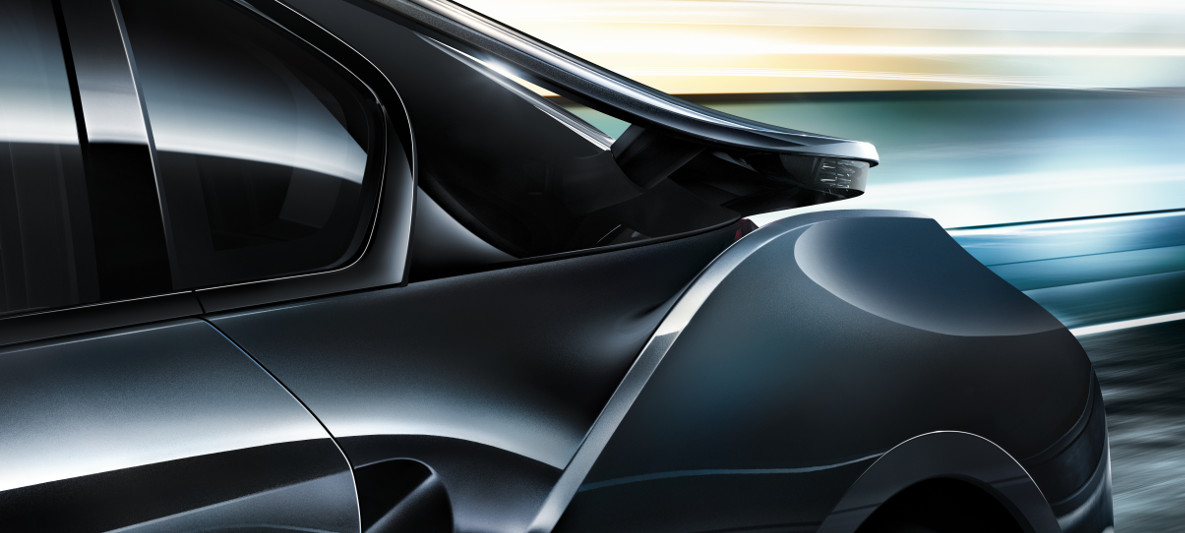Our tool for managing your permission to our use of cookies is temporarily offline. Therefore some functionality is missing.

AN ATHLETE IN TOP FORM.
Efficiency & Dynamics of the BMW i8.
With the innovative LifeDrive vehicle architecture, the BMW i8 has ideal conditions for a weight-optimised design and boasts the lowest centre of gravity amongst all BMW vehicles. A perfect basis for the characteristics of a classical sports car. Thanks to ultra-lightweight materials, specific aerodynamic optimisation and a comprehensive package of BMW EfficientDynamics technologies, the BMW i8 also achieves astonishing figures for consumption and emissions.
With the innovative LifeDrive vehicle architecture, the BMW i8 has ideal conditions for a weight-optimised design and boasts the lowest centre of gravity amongst all BMW vehicles. A perfect basis for the characteristics of a classical sports car. Thanks to ultra-lightweight materials, specific aerodynamic optimisation and a comprehensive package of BMW EfficientDynamics technologies, the BMW i8 also achieves astonishing figures for consumption and emissions.



AERODYNAMICS.
Streamlined body, striking conical shape, low weight – the BMW i8 is undeniably a thoroughbred sports car. An array of aerodynamically optimised features ensure that maximum dynamics are combined with optimum efficiency. Just one example of this are LED rear lights which are created according to layering design principles and act as channels for the airstream.
Low, wide and dynamic.
-
Aerodynamic design
The lines and flat silhouette of the BMW i8 make its pronounced forward thrust evident at first glance. Impressively dynamic even when standing still, it has a shape and details committed to the ideals of aerodynamics, which also influence its design. The stream flow, defined by the merging shape of the C-pillar, the side wall that swings upwards and the roofline, is more than just an optical accent. In the BMW i8, this concept clearly improves aerodynamics. A drag coefficient (cd) of just 0.26 underlines the status of BMW i8 as a sports car – with an aerodynamic wedge-shaped design unlike any other.
-
Aerodynamic features
The partly closed BMW kidney grille and the active air control vents in the front only let in as much air as the cooling system requires. Large air inlets in the front air apron, known as Air Curtains, effectively contribute to lowering air resistance – and make the aerodynamics of the BMW i8 immediately tangible. The so-called aeroflaps behind the front wheels and in front of the rear wheels also have a positive influence on drag. The precisely balanced air flow in the bodyshell allows for the highest driving dynamics and stability. Also involved in this effect are the special side skirts with diffusor. Aero wheel rims are an additional feature that help to achieve the lowest possible air resistance by minimising turbulence around the wheels.

INTELLIGENT LIGHT WEIGHT CONSTRUCTION.
A systematic lightweight construction is of vital importance for electric vehicles. It’s one of the vehicle’s most expressive traits and influences dynamics, design and efficiency. A lower vehicle weight means faster acceleration, higher agility and maximum efficiency.
INTELLIGENT LIGHT WEIGHT CONSTRUCTION.
A systematic lightweight construction is of vital importance for electric vehicles. It’s one of the vehicle’s most expressive traits and influences dynamics, design and efficiency. A lower vehicle weight means faster acceleration, higher agility and maximum efficiency.
Lightweight construction in the BMW i8.
Less weight. More agility and efficiency
CARBON FIBRE.

To make up for the extra weight of the electric battery, the passenger compartment is made of a carbon fibre composite, which proves to be an ingenious all-rounder: up to 50 % lighter than steel and approximately 30 % lighter than aluminium, yet with the same highly-stable, crash-safe material properties. The BMW i models are the first vehicles in a large production series to have substantial sections made of this high-tech material. Carbon fibre is therefore an important component of the innovative LifeDrive architecture that changes everything in the BMW i8 – including the future of sporty driving.

LIFE DRIVE ARCHITECTURE.
Sports car proportions meet an extraordinary lightweight concept, in which the engineers have dispensed with every unnecessary gram. The LifeDrive architecture is made up of two units that correspond exactly to the requirements of intelligent lightweight construction. The first component is the Drive module, an aluminium chassis, with the electric motor located in its front section. In the rear part of the Drive module is the 3-cylinder petrol engine. Joining the two sections is the high-voltage battery. The second component of the LifeDrive architecture is the Life module, the ultra-light passenger cell made of high-strength carbon. It also plays a part in compensating for the additional weight of the electric motor and the high-voltage battery. This combination is known as the LifeDrive concept and makes the BMW i8 the forerunner of the hybrid generation. With a made-to-measure lightweight construction concept: the perfect, and efficient, way to bring maximum sportiness and ingenious sustainability to the streets.
-
50:50 axle load distribution
The special LifeDrive architecture allows the BMW i8 to distribute its weight optimally across both axles. The electric motor in the front, the petrol engine at the rear – and, as the consolidating element, the so-called energy tunnel with built-in high-voltage batteries runs along the centre console through the car. The hybrid technology with the battery at the bottom of the bodyshell combined with the lightweight carbon module above it ensures ideal weight distribution − and outstanding, extremely sporty handling.

